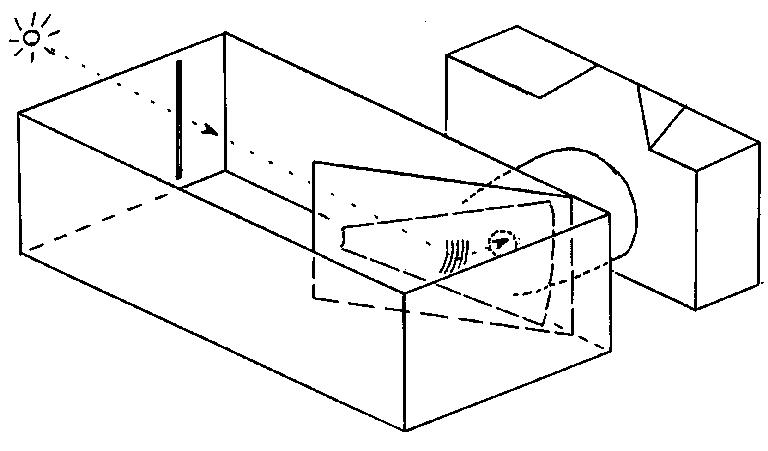
The CD ROM Spectroscope (Mk II version)
Joachim Köppen Kiel/Strasbourg/Illkirch Summer 2003

Another advantage is having the CDROM close to the eye, so that one can observe the different spectral orders by looking at slighty different directions, as indicated in the schema below
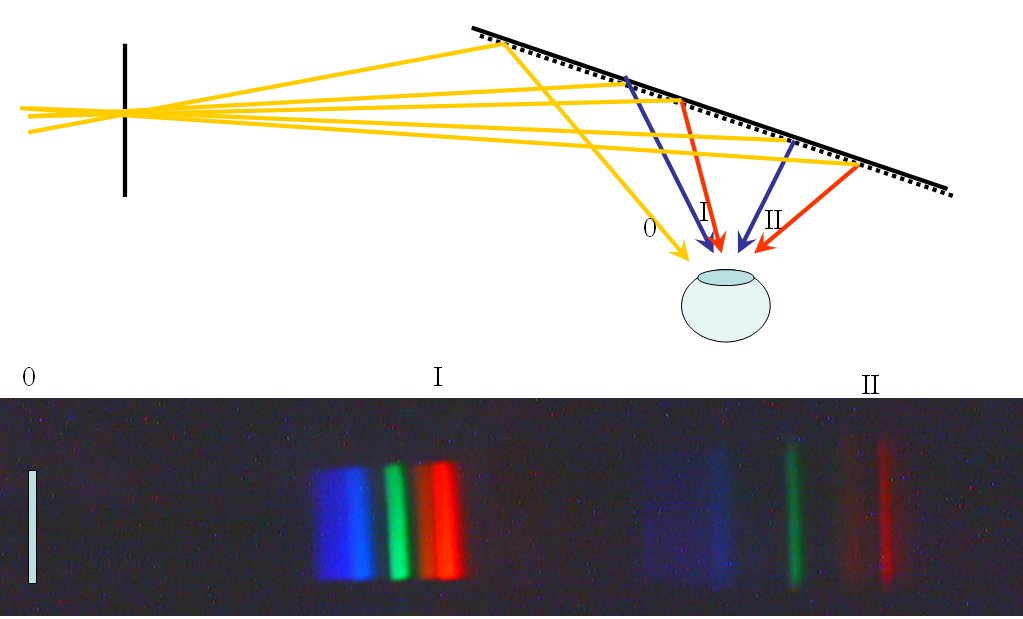
I use two halves of a cereal box, one of which is managed to fit inside the other. Cardboard is used for a holder of the CDROM and for a baffle. The latter is very useful to cut down the stray light that enters the slit from other directions; for instance if I observe a bright region of the sky, direct sun light enters the spectroscope, gets reflected by the walls in a diffuse way, and thus causes stray light. The baffle - a cardboard wall with an aperture just large enough to let light pass from the slit to to the CDROM - deals with that.
The slit is formed by two pieces of cardboard with straight edges; both are squeezed in between the cereal box halves. One is fixed, while the other can be moved. A large opening on the front surfaces of the two halves is cut, so that one can vary the slit width from wide open (for small distant sources) to very narrow (for direct sunlight). With this "cardboard technology" slit widths of 0.1 mm are indeed possible (and really needed for the sunlight!!).
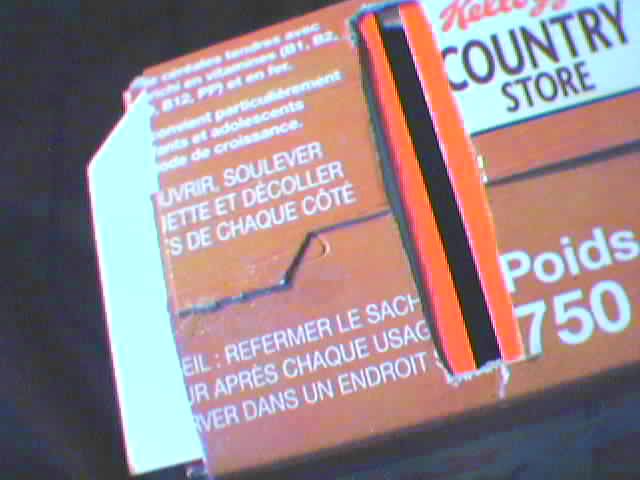
There is nothing special or critical with the dimensions; the distance between slit and eye - as seen via the CDROM - should be a comfortable reading distance. My boxes have about 25 cm length. The only somewhat delicate thing is the placing and orientation of the CDROM. Here is a view:
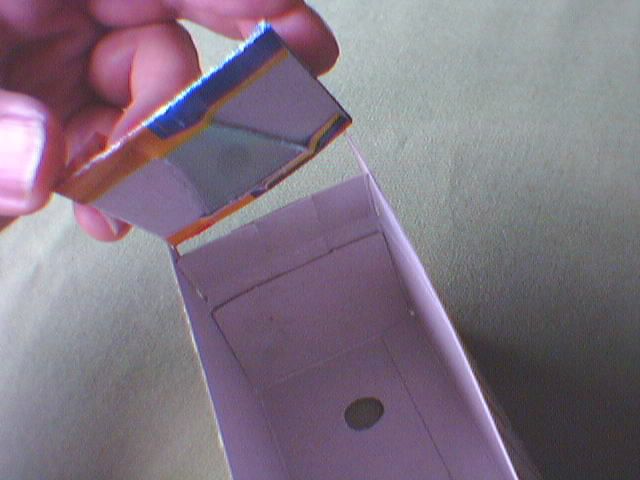
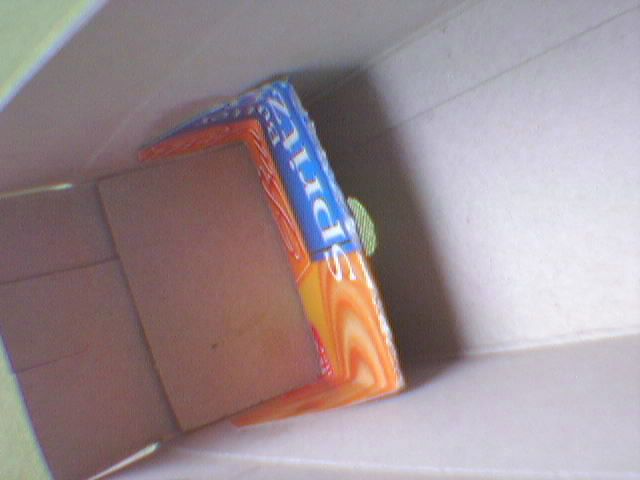
This is a view of the exterior, showing the observation aperture. The entrance slit is on the left hand side, hidden in the shadow
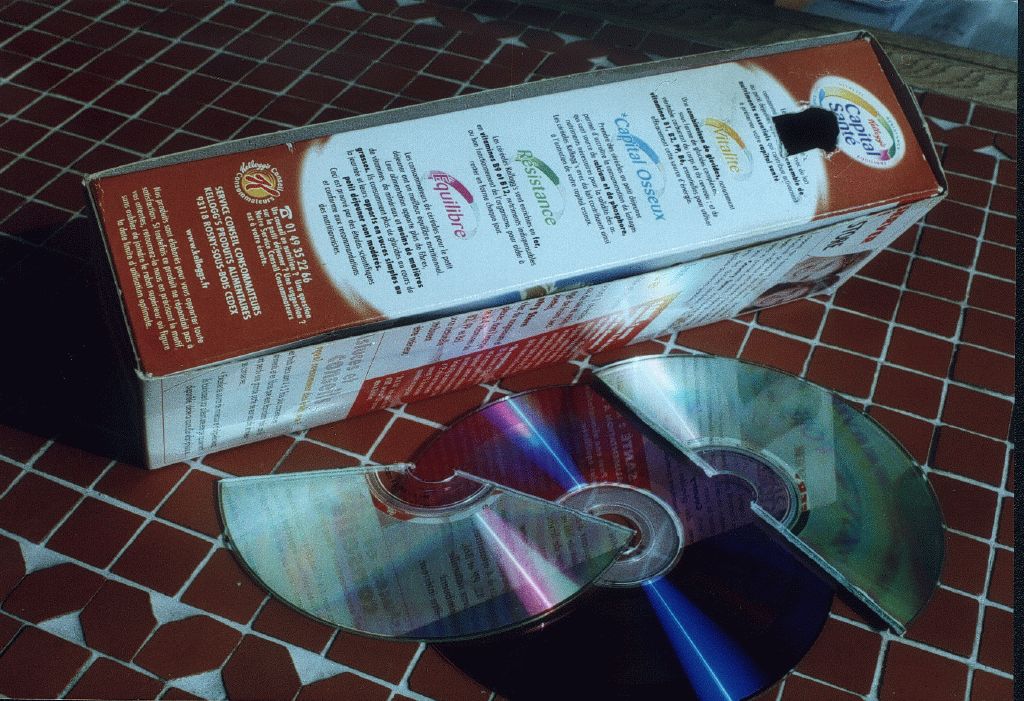
The interior view shows the cardboard holder for the CDROM (left) and the baffle against straylight (centre). Below it the outer box with the entrance slit assembly and the moveable cardboard slit jaw.
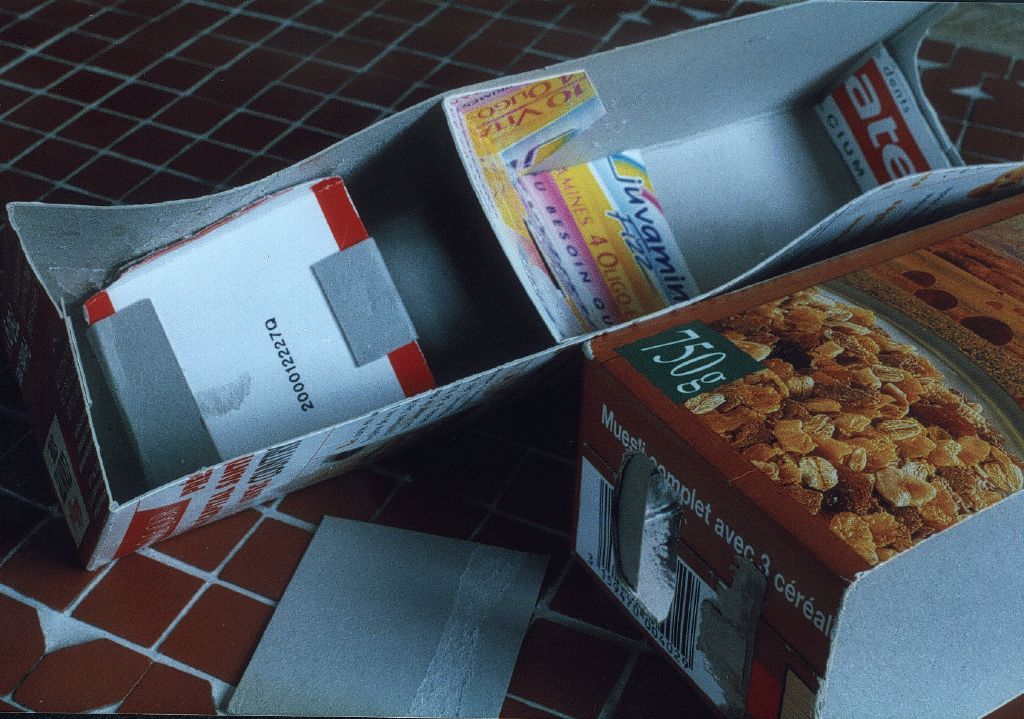
Another view of the interior, with the CD ROM holder and the straylight baffle.
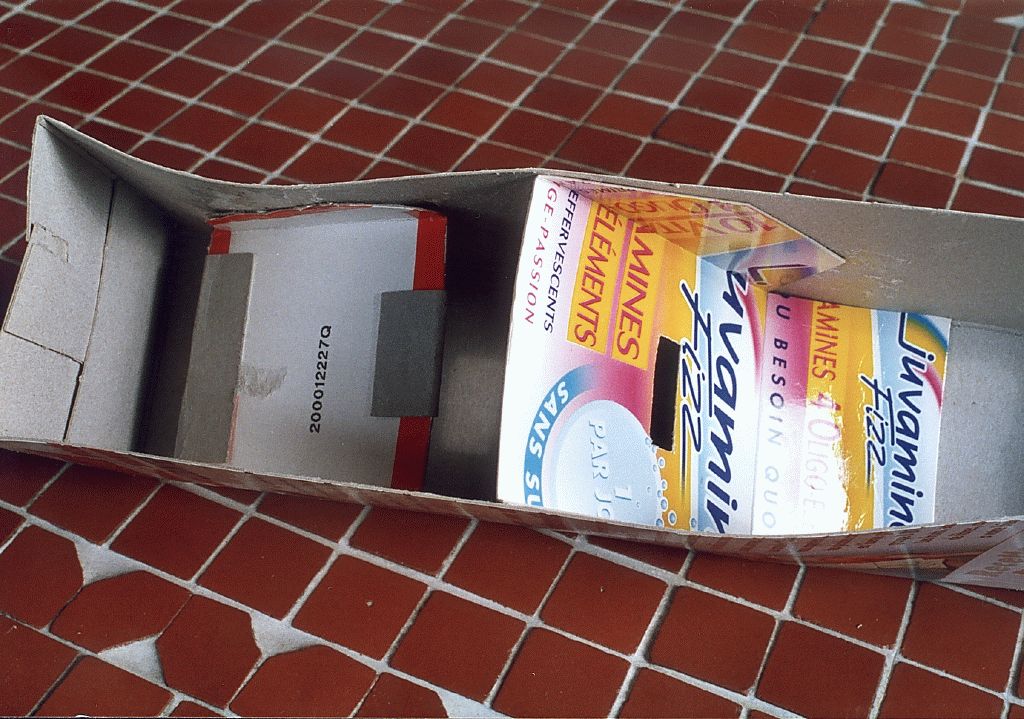
Since I use two halves of the same cardboard box put into each other, the inner one shows a decorative wavy deformation, which does not interfere with its function.
Here is the spectroscope "in action":
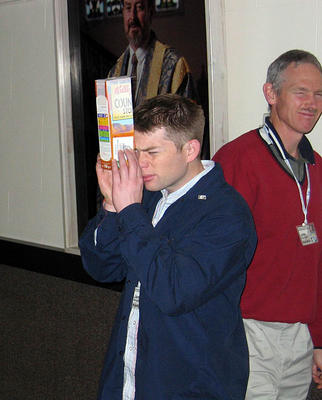
Below is an example spectrum of the Sun: this is the blue and green part of the second order spectrum, showing the very strong H and K lines of ionized calcium in the ultraviolet near 400 nm - the photographic film is still sensitive enough - Hd at 410 nm, the region about Hg near 434 nm (that's the bluest which my eyes can see), Hb at 486 nm, and the Mg b triplet (the two lines on the blue side are not quite resolved). The red hue is the start of the first order spectrum:
